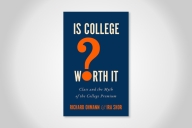You have /5 articles left.
Sign up for a free account or log in.
Undergraduate students should join professors in selecting the content of courses taught in the humanities.
This is the conclusion I came to after teaching Humanities on Demand: Narratives Gone Viral, a pilot course at Duke University that not only introduced students to some of the critical modes humanists employ to analyze new media artifacts, but also tested the viability of a new, interactive course design. One semester prior to the beginning of class, we asked 6,500 undergraduates -- in other words, Duke¹s entire undergraduate student body -- to go online and submit materials they believed warranted examination in the course.
Submissions could be made regardless of whether a student planned on enrolling in the course. In response, hundreds of students from a variety of academic disciplines, including engineering, political science, religion, foreign languages, anthropology, public policy and computer science, submitted content for the class.
This interactive approach, which I call Epic Course Design (ECD) after German playwright Bertolt Brecht’s theory of epic theater, represents a radical break with traditional course-building techniques. Generally, humanities instructors unilaterally choose the content of their syllabuses -- and rightly so. After all, we are the experts. But this solitary method of course construction does not reflect how humanists often actually teach.
Far from being viewed as passive receptacles of instructional data, humanities students are often engaged as active contributors. With this in mind, ECD offers a student-centered alternative to traditional course-building methods. Importantly, ECD does not allow students to dictate the content of a course; it invites them to contribute, with the instructor ultimately deciding which (if any) student-generated submissions merit inclusion on the syllabus.
Nevertheless, when a colleague of mine first heard about my plans to allow students to determine what was to be examined in Narrative Gone Viral, he was deeply skeptical: "But students don¹t know what they don’t know," he objected. In my view, that is not a problem -- that is the point; or at least part of it. For crowdsourcing the curriculum not only invites students to submit material they are interested in, but also invites them to choose material they believe they already understand. Student-generated submissions for Narratives Gone Viral included popular YouTube videos like "He-Man sings 4 Non Blondes," "Inmates Perform Thriller" and "Miss Teen USA 2007- South Carolina answers a Question." While my students were already exceedingly familiar with these videos, they clearly didn’t always see what was at stake in them.
All of these works are worthy of academic scrutiny: the "He-Man" piece is interesting because it confronts preconceived notions of masculinity; "Inmates Perform Thriller" prompts questions of accessibility to social media; "Miss Teen USA" is notable because it reveals how viral videos often appeal to a viewer’s desire to feel superior to others.
I am not proposing that all humanities courses should integrate this approach. What I am suggesting, however, is that ECD represents a viable alternative to more familiar course-building methodologies. This includes classes that do not focus on social media and/or popular culture. Importantly, whether students will be interested in suggesting texts for, say, a course on medieval German literature is not the crucial question; in my view, the crucial question is: Why should we refrain from offering motivated students the opportunity to do so, if they wish?
There was relatively little repetition in student submissions for Narratives Gone Viral, an indication that students were reviewing posts made by their peers, weighing their options, and responding with alternative suggestions.
To put a finer point on the matter, students were not merely submitting course content: they were discussing the content of a course that -- in every traditional sense -- had yet to even begin.








